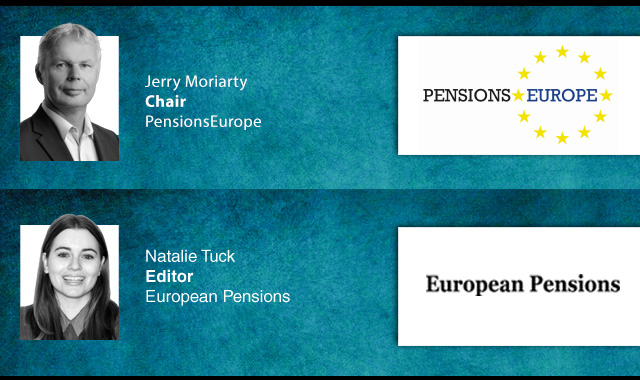Ilonka Oudenampsen asks how far pan-European pensions have come
Now that the European Union (EU) has more or less decided that there will be no Solvency II for IORPS, another step has been set in the difficult and slow process of creating a pan-European pension system. This would make saving for a pension much easier for mobile workers across the Union, who make up about 5-10% of the workforce.
Julian Webb, head of DC at Fidelity International explains that there are several reasons for the demand for a pan-European solution. “The key driver for this is often where the employer has too few employees in a particular country to make it viable to set up a locally approved plan; or where they are employing individuals in emerging markets where pensions are not really recognised or the infrastructure is not particularly advanced.”
With the establishment of the Institutions for Occupational Retirement Provision (IORP), from EIOPA’s IORP Directive, the EU is trying to establish a second pillar for a pan-European pension system. Two other directives already created the possibility to take the benefits of the first pillar, the state pension, to another member state.
However, Chris Verhaegen, secretary general at the European Federation for Retirement Provision (EFRP) believes that there is no immediate future for a pan-European pension system in the second pillar, but that it may work for the third, individual voluntary pillar. “It will be difficult to implement this for occupational pensions and that’s why we should still keep a distinction between occupational pensions, which have an ingredient of social and labour law in each member state, because member states will not want to do away with social and labour law in their occupational schemes.”
A pan-European system, she says, should be based on a pay-as-you-go funded system in the first pillar, for which the different governments are responsible. She adds that with the difference between member states, it would be hard to set up a completely pan-European pension system: “What sort of supplementary pension would that be? Do you organise it through the workplace, do you impose it on the population at large and make it mandatory for everybody? Do you rely on social partners to make it quasi-mandatory? Or do you leave it all voluntary and then see what happens?”
Webb believes that the market place hasn’t really provided a solution yet, despite multinationals having a real desire for one. “The primary reason behind that is that to really have an effective European pension system, we need to see things like common taxation across Europe and also a consistent, common approach to regulation.”
According to Webb, though, pan-European pensions are still at the ‘idea’ rather than ‘implementation’ stage. Until tax harmonisation and a consistent approach around regulation is introduced in the EU, multinationals have the option to put a benefit structure in place that sits above local taxation and regulation.
He explains: “Effectively you provide retirement savings plans rather than pension plans, meaning that there is no tax approval status. Employees can accumulate tax in a structure which lends itself to long-term savings for retirement, which the employer can also contribute to, and then at the point of retirement the benefits are paid out in cash.”
Anne-Christine Lussie, head of structuring at BGI BNP Paribas says pan-European pensions exist in theory, but that they are not widely used because there is still a lot of progress to be made. “Among the obstacles are the tax issues. Sometimes governments are reluctant to provide for tax deductability of contributions made cross-border. This is being progressively solved, because within the EU tax barriers of this kind are prohibited, as they are not com-patible with European law. So it is improving, but part of the problem is that it’s very difficult for employers to move their pension plan, even within the same country.”
Jacqueline Lommen, senior international benefits consultant at Aon Hewitt, however, says cross-border IORPS are doing well, and that the main issue now is the potential introduction of EU solvency rules. Currently there are about 85 IORPS, which are all pension trusts in Europe.
IORPS are mutually recognised, so that they can offer services across borders, like insurers and banks can also do. They do need to ask for a licence before operating in a different country, but that’s a short process of three months maximum.
Lommen says: “Often it is said that there are tax problems, or that the IORP has to take into account social and labour law in the different countries. And of course this differs, but this is not such a big issue, because Europe has already arranged a lot when it comes to taxation. One is no longer allowed tax-discrimination. And where social and labour law is concerned: those big companies already have a pension arrangement in place in for instance France, which will abide to the French social and labour law. The only thing you do is transfer that arrangement to a European IORP, to a different vehicle. But the arrangement itself doesn’t change and will still abide by the social and labour law.”
Therefore these IORPS have several pension arrangements, which depend on the number of countries they operate in. These arrangements won’t be harmonised, but usually stay the way they are set up in the different countries.
The biggest issue in the pan-European pension sphere at the moment is around the solvency requirements of the IORPS, as currently an unlevelled playing field exists between them. Although such rules already exist for banks and insurance companies, they do not (yet) exist for IORPS.
On one side of this debate are the English and the Irish, where pensions are a kind of social institute backed by a sponsor covenant. They say they do not want EU solvency requirements to come on top, saying that it will become overregulated and too expensive to run DB schemes. On the other side are countries like Germany, France and Scandinavia, where big insurance companies deal with the pension funds and where pensions are more seen as financial institutions. The insurers say that if they have to abide to solvency rules, then IORPS, which are operating in the same field, should have solvency requirements too.
Lommen says: “One of the main worries of the industry has already been ruled out: there will be no Solvency II for pension funds. If EU solvency rules might be issued in future, most likely the principles will be similar to the Solvency II framework, but the calculation parameters will be filled in differently. “Europe is also not likely going to interfere in pension arrange-ments agreed on between employers and employees, neither the way member states’ local pension systems are organised, as many fear will happen, because the subsidiarity principle does not allow the Union to do so.”
Latest News
-
17% of Danes sees their income halved when they retire, I&P Denmark finds
-
Steady UK DB funding levels cap off positive 2025 for schemes
-
Disability pension applications fall 8% at Ilmarinen amid 'notable shift' in requests
-
Netherlands ABP voted against anti-DEI proposals in 2025 AGM season
-
36% of Finnish retirees think older workers are seen as a burden, Elo survey
-
41% of young Dutch adults say saving is most important financial resolution
Podcast: Stepping up to the challenge

In the latest European Pensions podcast, Natalie Tuck talks to PensionsEurope chair, Jerry Moriarty, about his new role and the European pension policy agenda
Podcast: The benefits of private equity in pension fund portfolios

The outbreak of the Covid-19 pandemic, in which stock markets have seen increased volatility, combined with global low interest rates has led to alternative asset classes rising in popularity. Private equity is one of the top runners in this category, and for good reason.
In this podcast, Munich Private Equity Partners Managing Director, Christopher Bär, chats to European Pensions Editor, Natalie Tuck, about the benefits private equity investments can bring to pension fund portfolios and the best approach to take.
In this podcast, Munich Private Equity Partners Managing Director, Christopher Bär, chats to European Pensions Editor, Natalie Tuck, about the benefits private equity investments can bring to pension fund portfolios and the best approach to take.
Mitigating risk
BNP Paribas Asset Management’s head of pension solutions, Julien Halfon, discusses equity hedging with Laura Blows
© 2019 Perspective Publishing Privacy & Cookies







Recent Stories